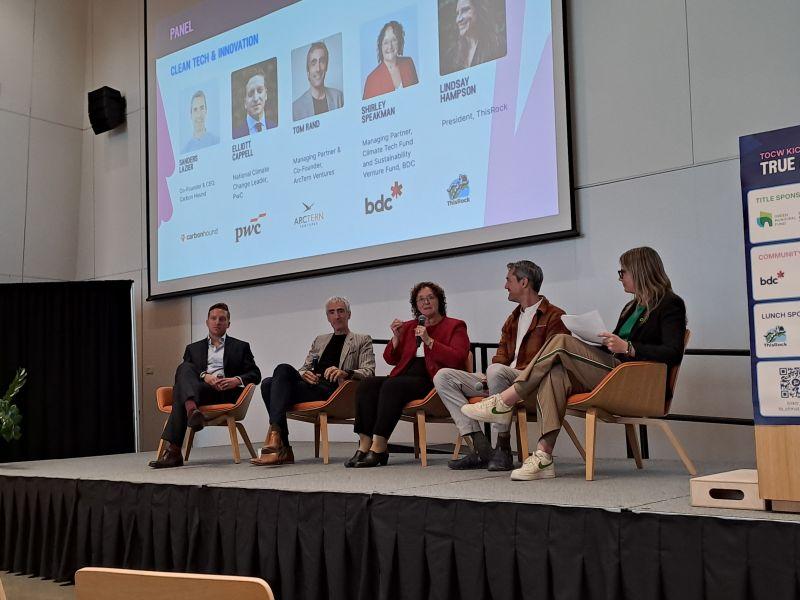 Prepare for the unexpected and establish clear roles for involved parties when decarbonizing a building or a portfolio, a panel of experts at a Canada Green Building Council (CAGBC) webinar said.
Prepare for the unexpected and establish clear roles for involved parties when decarbonizing a building or a portfolio, a panel of experts at a Canada Green Building Council (CAGBC) webinar said.
Held on Sept. 26, the event, Accelerating to Zero: Transition Planning and the Role of the Workforce, examined how a company’s staff can be ready to help shift buildings away from carbon with lessons from Canadian companies making the change internally or guiding their clients.
Such advice would likely be valuable for the dozens of attendees: a straw poll found over half have never contributed to zero-carbon transition plan for a portfolio or building.
“The asset transition plans, I like to call them asset transition scenarios,” Carolyn Johanson, the practice lead of decarbonization strategy at WSP, said about the unpredictability that can emerge during the work, summarizing the thoughts of the other two panelists.
Peter Whitred, the general manager of accessibility, corporate sustainability and ESG at Canada Post, gave an example of the problem Johanson raised, of a time when retrofitting an older building dealt with a hazardous material that had to be addressed.
Establishing the client’s vision and values is a crucial step, Stephen Montgomery, a sustainability specialist and building systems manager at PCL Construction, said.
“We’re talking to the architectural engineering and construction industry about finding the intersection of value and vision,” he said.
Anticipating the curveballs
A key skill that must be harnessed by WSP’s engineering team is “being comfortable with uncertainty,” Johanson explained. The electrical capacity may not exist to make the transition. Perhaps there needs to be a drastic change to the distribution system. A pandemic may throw off the best-laid plans.
Whitred concurred. Canada Post’s 2050 net-zero target means addressing its 3,000 buildings across the country, he said, which requires answering the question of which ones should be decarbonized over time. If the HVAC systems at a building are nearing end-of-life, it makes it likelier Canada Post will prioritize the replacement. But at the asset level, plans change. Sometimes the costs are too high, so repairs take precedence over retrofits.
A Canada Post building in Thetford Mines, Que. that began service in 1941 is one example. Before electric boilers could be incorporated as a cleaner alternative to fossil fuel-powered equipment, Canada Post had to remediate the asbestos in the building, adding to the price of the project.
To ensure whiplash from a drastically altered plan does not hurt morale, Johanson recommended a team focus on “what are the questions that the clients need to answer right now.” Financial literacy is also “super important from a workforce perspective”, she said. “Putting all of those perspectives together from the strategic to the financial to the technical into one really feasible product is a constant challenge.”
Getting everyone on the same path
Montgomery said PCL’s task is to tear down common obstacles that its clients encounter, which often arise from something as complex as a building. But many of its clients are stumbling around with their decarbonization plans.
PCL’s decarbonization team asks:
- Who is the client is and what are its priorities?
- Is the client prepared for the change, and what responsibility does the client want to leave with PCL?
- What roles do the architects, engineers and sustainability consultants have?
- How will designers be sharing responsibilities around the energy modelling, targets and metrics?
Assembling stakeholders across the technical, financial and operational levels in the early decision-making stages is necessary, Johanson said. “The technical work doesn’t help if it isn’t being launched into an organization that is ready for it and understands the decisions and steps that need to be taken.”
Johanson stressed the gravity of the organization's motivation to go from planning to implementation. She recommended reflecting on whether the client has strong targets and commitments to sustainability and if the governance lays out who is responsible. External supporting factors such as incentives and regulations - the carrots and sticks that can motivate change - are other matters to consider.
Communication is “huge” between consultants as well. A consultant should deliver a plan that is clear and explains decisions well, she concluded.
In response to a question about how to set ambitions when all the players are not on the same page, Johanson's answer highlighted having an educated owner who knows what it wants.
“When you have a client that understands how to ask for the right amount of work at the right stage in the project, that’s incredibly valuable and can really, really smooth that process.”










